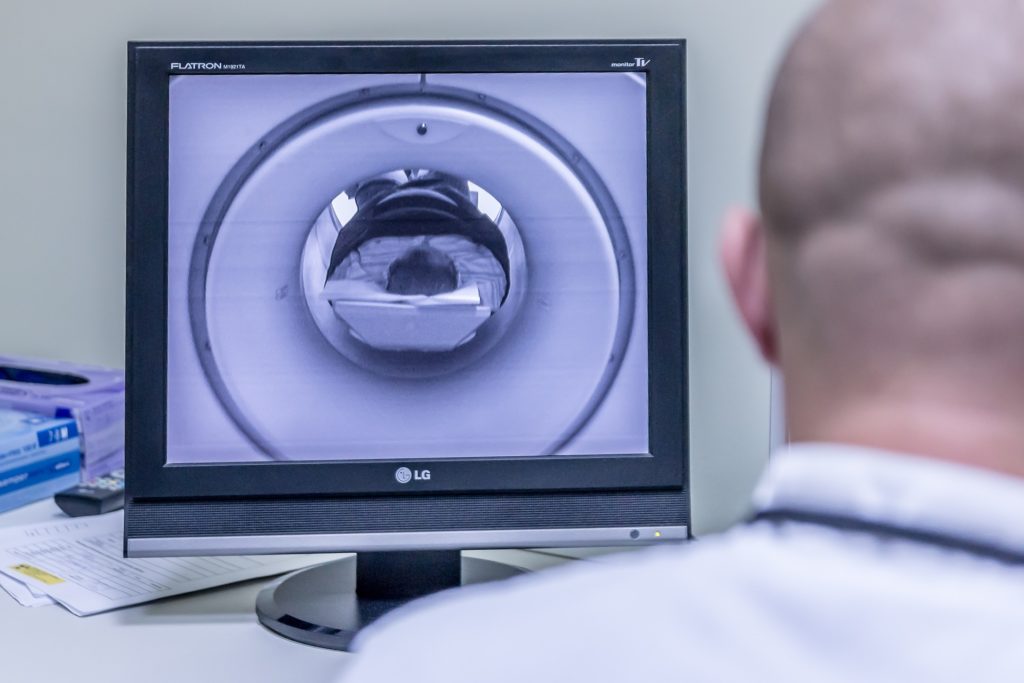
Can multiple sclerosis cause pain? Yes, it can! This video highlights 11 common pain syndromes associated with MS, including trigeminal neuralgia, the “MS hug,” neuropathic pain, muscle spasms, and several others.

Can multiple sclerosis cause pain? Yes, it can! This video highlights 11 common pain syndromes associated with MS, including trigeminal neuralgia, the “MS hug,” neuropathic pain, muscle spasms, and several others.

Stereotactic radiation is an effective, long-term treatment for trigeminal neuralgia: a painful condition that occurs with increased frequency in patients with multiple sclerosis (MS). Radiation is noninvasive and has less negative side effects than other treatments, according to the longest follow-up in a study of its kind presented October 31, 2010, at the 52nd Annual Meeting of the American Society for Radiation Oncology (ASTRO).
Multiple sclerosis is a progressive neurological disease affecting about 300,000 Americans where the body’s immune system attacks its own nerve cells, affecting the ability of the brain to communicate with the spinal cord. Trigeminal neuralgia is an intensely painful condition caused by dysfunction of the trigeminal nerve, which is one of the nerves that innervates the face. People living with MS see a significantly increased incidence of this problem.
“We studied patients for a median of five years after treatment, which is the longest period of follow-up ever completed,” Tejan Diwanji, lead author of the study at the University of Maryland, School of Medicine in Baltimore, said “Our study shows that radiosurgery using Gamma Knife is a proven alternative to surgery or anti-epileptic drugs.”
The study was designed to determine the long-term effectiveness of treating trigeminal neuralgia in MS patients with Gamma Knife radiosurgery.
Stereotactic radiation is a specialized type of external beam radiation therapy that uses focused radiation beams to target a well-defined area. It is most often used for tumors of the brain, but in this case, doctors targeted a nerve root, relying on detailed imaging and computerized three-dimensional planning to deliver the radiation dose with extreme accuracy while sparing the surrounding tissue to reduce side effects.
Stereotactic radiation therapy, sometimes called radiosurgery, refers to a single or several treatments to the brain. Doctors in this study used GammaKnife. Other brand names for stereotactic radiation include Axesse, CyberKnife, Novalis, Primatom, Synergy, X-Knife, TomoTherapy or Trilogy.
The study involved 13 MS patients with trigeminal neuralgia who were treated with radiosurgery at the University of Maryland between 1998 and 2001 and were followed for a median of five years after treatment.
“We need more long-term studies to confirm the positive and lasting outcomes of radiosurgery, then it could become the treatment of choice for MS patients afflicted with trigeminal neuralgia,” Diwanji, said. “I encourage people with MS suffering from trigeminal neuralgia to talk to their doctor about consulting a radiation oncologist to see if they would be good candidates for radiosurgery.”

Trigeminal Neuralgia HURTS! Trigeminal Neuralgia is often described as some of the worse pain a human can experience. In this video I’m going to teach you about it. Want to better understand why trigeminal neuralgia hurts so badly? Then start watching this vid right now!
A new study has shown that use of peripheral nerve blocks in the treatment of Trigeminal Neuralgia (TGN) may produce long-term pain relief.
TGN is a condition involving sudden episodes of severe facial pain that significantly reduces quality of life in those affected. When medication fails to control the pain, some patients turn to
invasive procedures that require a high level of expertise and can result in long-standing numbness. Peripheral Trigeminal Nerve Blocks (PTNB), a procedure in which a numbing medication is injected at the sites where the problem nerve reaches the face, is a promising alternative to the riskier, ganglion-level procedures, although its efficacy in both short-term and long-term management of TGN has not been well studied.
In a case series in this week’s American Journal of Emergency Medicine, Michael Perloff, MD, assistant professor of neurology at Boston University School of Medicine, examines nine patients with TGN treated with PTNB. He finds that all nine had immediate relief of their pain after the procedure, with most reporting that they were pain-free. In addition, six of the nine patients noted continued pain relief from a range of one to eight months following the procedure, with two of them having complete resolution of their pain months after the injections.
Perloff, also a neurologist at Boston Medical Center, sees these results as a promising step for treating patients with TGN. “PTNB can be a simple, safe alternative compared to opioids, invasive ganglion level procedures or surgery.”